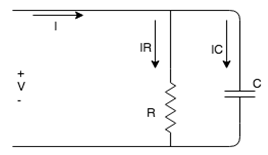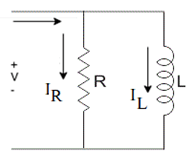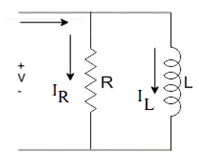Latest Electrical Engineering MCQs – Single-Phase Parallel Networks MCQs ( Electrical Engineering ) MCQs
Latest Electrical Engineering MCQs
By practicing these MCQs of Single-Phase Parallel Networks MCQs ( Electrical Engineering ) MCQs – Latest Competitive MCQs , an individual for exams performs better than before. This post comprising of objective questions and answers related to “Single-Phase Parallel Networks MCQs ( Electrical Engineering ) Mcqs “. As wise people believe “Perfect Practice make a Man Perfect”. It is therefore practice these mcqs of Electrical Engineeringto approach the success. Tab this page to check “Single-Phase Parallel Networks MCQs ( Electrical Engineering )” for the preparation of competitive mcqs, FPSC mcqs, PPSC mcqs, SPSC mcqs, KPPSC mcqs, AJKPSC mcqs, BPSC mcqs, NTS mcqs, PTS mcqs, OTS mcqs, Atomic Energy mcqs, Pak Army mcqs, Pak Navy mcqs, CTS mcqs, ETEA mcqs and others.
Single-Phase Parallel Networks MCQs ( Electrical Engineering ) MCQs – Electrical Engineering MCQs
The most occurred mcqs of Single-Phase Parallel Networks MCQs ( Electrical Engineering ) in past papers. Past papers of Single-Phase Parallel Networks MCQs ( Electrical Engineering ) Mcqs. Past papers of Single-Phase Parallel Networks MCQs ( Electrical Engineering ) Mcqs . Mcqs are the necessary part of any competitive / job related exams. The Mcqs having specific numbers in any written test. It is therefore everyone have to learn / remember the related Single-Phase Parallel Networks MCQs ( Electrical Engineering ) Mcqs. The Important series of Single-Phase Parallel Networks MCQs ( Electrical Engineering ) Mcqs are given below:
Basic AC Parallel Circuits
1. In a parallel circuit, we consider _____________ instead of impedance.
a) Resistance
b) Capacitance
c) Inductance
d) Admittance
Answer: d
Explanation: In a parallel circuit, we consider admittance instead of impedance, where admittance is the reciprocal of impedance.
2. In a parallel circuit, we consider admittance instead of _________
a) Resistance
b) Capacitance
c) Inductance
d) Impedance
Answer: d
Explanation: In a parallel circuit, we consider admittance instead of impedance, where admittance is the reciprocal of impedance.
3. Which, among the following is the correct expression for impedance?
a) Z=Y
b) Z=1/Y
c) Z=Y2
d) Z=1/Y2
Answer: b
Explanation: We know that impedance is the reciprocal of admittance, hence the correct expression for impedance is: Z=1/Y.
4. Which, among the following is the correct expression for admittance?
a) Y=Z
b) Y=1/Z
c) Y=Z2
d) Y=1/Z2
Answer: b
Explanation: We know that admittance is the reciprocal of impedance, hence the correct expression for admittance is: Y=1/Z.
5. What is the unit of admittance?
a) ohm
b) henry
c) farad
d) ohm-1
Answer: d
Explanation: The unit for admittance is ohm-1 because the unit of impedance is ohm and admittance is the reciprocal of impedance.
6. As the impedance increases, the admittance ____________
a) Increases
b) Decreases
c) Remains the same
d) Becomes zero
Answer: b
Explanation: As the impedance increases, the admittance decreases because admittance is equal to 1/impedance.
7. if the impedance of a system is 4 ohm, calculate its admittance.
a) 0.25 ohm-1
b) 4 ohm-1
c) 25 ohm-1
d) 0.4 ohm-1
Answer: a
Explanation: We know that: Y=1/Z.
Substituting the value of Z from the question, we get Y = 1/4 = 0.25 => Y= 0.25 ohm-1.
8. The admittance of a system is 10 ohm-1, calculate its impedance.
a) 10 ohm
b) 0.1 ohm
c) 1 ohm
d) 1.1 ohm
Answer: b
Explanation: We know that: Z=1/Y.
Z = 1/10 = 0.1 => Z = 0.1 ohm.
9. In A parallel circuit, with any number of impedances, The voltage across each impedance is?
a) equal
b) divided equally
c) divided proportionally
d) zero
Answer: a
Explanation: In parallel circuits, the current across the circuits vary whereas the voltage remains the same. So, voltage across each impedance is equal in parallel circuit.
10. In a parallel circuit, current in each impedance is_____________
a) equal
b) different
c) zero
d) infinite
Answer: b
Explanation: In parallel circuits, the current across the circuits vary whereas the voltage remains the same. So, current in each impedance is different.
Simple Parallel Circuits
1. From the given circuit, find the value of IR.
a) 0
b) V/I
c) V/R
d) Cannot be determined
Answer: c
Explanation: In the given circuit, the voltage across the resistor is the same as the source voltage as they are connected in parallel. The current in the resistor is IR hence IR=V/R.
2. What is the relation between IR and V in the following circuit?
a) IR leads V
b) IR lags V
c) IR and V are in phase
d) No relation
Answer: c
Explanation: In the following circuit IR and V are in phase because IR is the current in the resistor and the current in the resistor is always in phase with the voltage across it.
3. What is the expression for the current in the inductor from the following circuit?
a) V/I
b) V/XL
c) 0
d) Cannot be determined
Answer: b
Explanation: In the given circuit, the voltage across the inductor is the same as the source voltage as they are connected in parallel. The current in the inductor is IL hence IL=V/XL.
4. What is the phase relation between IL and V from the following circuit?
a) IL lags V
b) IL leads V
c) IL and V are in phase
d) No relation
Answer: a
Explanation: IL is the current across the inductor and we know that the current across the inductor always lags the voltage across it. Hence IL lags V.
5. Find the expression for the current I from the given circuit.
a) I=IC
b) I=IR
c) I=IC+IR
d) I=0
Answer: c
Explanation: I is the total current in the circuit. Since this is a parallel connection, the total current in the circuit is equal to the sum of the currents in each branch of the circuit. Hence I=IC+IR.
6. Find the total current if IC=2A and IR=5A.
a) 3A
b) -3A
c) 7A
d) 10A
Answer: c
Explanation: I is the total current in the circuit. Since this is a parallel connection, the total current in the circuit is equal to the sum of the currents in each branch of the circuit. Hence I=IC+IR.
I=2+5=7A.
7. Find the value of IR if I=10A and IC=8A.
a) 5A
b) 18A
c) 12A
d) 2A
Answer: d
Explanation: I is the total current in the circuit. Since this is a parallel connection, the total current in the circuit is equal to the sum of the currents in each branch of the circuit. Hence I=IC+IR.
10=8+IR => IR=2A.
8. Find the value of IL if IC=10A and IR=6A.
a) 4A
b) 18A
c) 12A
d) 2A
Answer: a
Explanation: I is the total current in the circuit. Since this is a parallel connection, the total current in the circuit is equal to the sum of the currents in each branch of the circuit. Hence I=IC+IR.
10=IC+6 => IC=4A.
9. What is the expression for the current in the capacitor from the following circuit?
a) V/C
b) V/I
c) 0
d) V/XC
Answer: d
Explanation: In the given circuit, the voltage across the capacitor is the same as the source voltage as they are connected in parallel. The current in the capacitor is IC hence IC=V/XC.
10. What is the phase relation between IC and V from the following circuit?
a) IC lags V
b) IC leads V
c) IC and V are in phase
d) No relation
Answer: b
Explanation: IC is the current across the capacitor and we know that the current across the capacitor always leads the voltage across it. Hence IC leads V.
Parallel Impedance Circuits
1. In an impedance parallel network, the reactive component will ____________ the voltage by 90 degrees.
a) Lead
b) Lag
c) Either lead or lag
d) Depends on the circuit
Answer: c
Explanation: In an impedance parallel network the reactive component will either lead or lag the voltage by 90 degrees.
2. In an impedance parallel network, the reactive component will either lead or lag the voltage by _________ degrees.
a) 0
b) 90
c) 45
d) 180
Answer: b
Explanation: In an impedance parallel network the reactive component will either lead or lag the voltage by 90 degrees.
3. In an impedance parallel network, the reactive component will either lead or lag the ________ by 90 degrees.
a) Voltage
b) Current
c) Either voltage or current
d) Cannot be determined
Answer: a
Explanation: In an impedance parallel network the reactive component will either lead or lag the voltage by 90 degrees.
4. The reactive component in an impedance parallel circuit leads the voltage when the current _________ the voltage.
a) Leads
b) Lags
c) Either leads or lags
d) Cannot be determined
Answer: a
Explanation: The reactive component in an impedance parallel circuit leads the voltage when the current leads the voltage.
5. The active component in an impedance parallel circuit will __________ the voltage.
a) Leads
b) Lags
c) Be in phase with
d) Either leads or lags
Answer: c
Explanation: The active component in an impedance parallel network will always be in phase with the voltage in the circuit.
6. The phase difference between the active component of an impedance parallel circuit and the voltage in the network is __________
a) 0
b) 90
c) 180
d) 360
Answer: a
Explanation: The active component in an impedance parallel network will always be in phase with the voltage in the circuit. Hence the phase difference is 0.
7. The quadrature component is also known as?
a) Active component
b) Reactive component
c) Either active or reactive component
d) Neither active nor reactive component
Answer: b
Explanation: The quadrature component is also known as the reactive component because the reactive component forms a quadrature with the voltage.
8. Find the expression for the current I from the given circuit.
a) I=IL
b) I=IR
c) I=IL+IR
d) I=0
Answer: c
Explanation: I is the total current in the circuit. Since this is a parallel connection, the total current in the circuit is equal to the sum of the currents in each branch of the circuit. Hence I=IR+IL.
9. Find the value of IR if I=10A and IL=8A.
a) 5A
b) 18A
c) 12A
d) 2A
Answer: d
Explanation: We know that I=IR+IL.
10=IR+8 => IR=2A.
10. Find the total current if IL=2A and IR=8A.
a) 3A
b) -3A
c) 7A
d) 10A
Answer: d
Explanation: We know that I=IR+IL.
I=8+2=10A.
